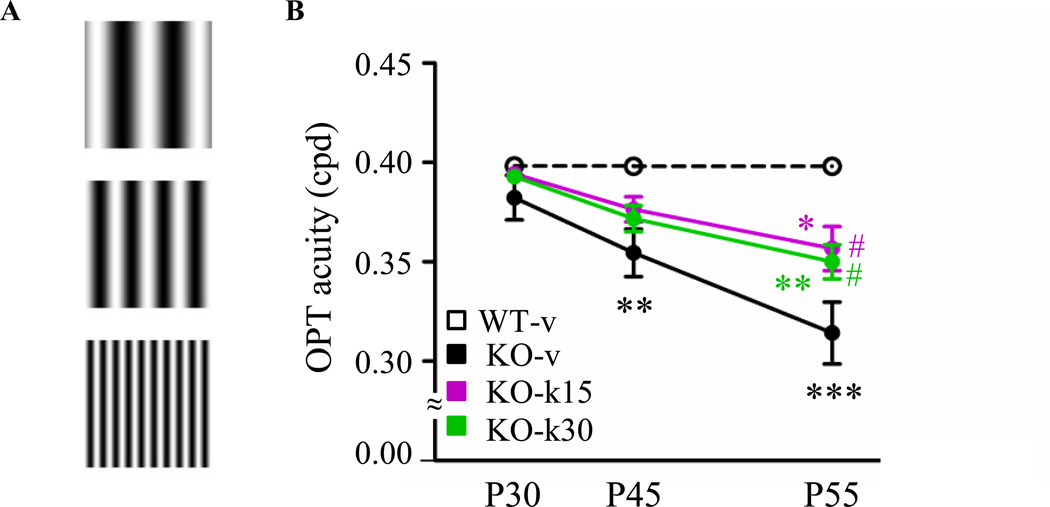Figure. 4.

Ketamine delays regression of the visual acuity. (A) Example of stimulation used to measure visual acuity by optomotor task (OPT). (B) Average OPT visual in WT-v (n = 14), KO-v (n = 20), KO-k15 (n =11) and KO-k30 (n = 21) mice. Visual acuity was significantly reduced in KO-v (Two-way ANOVA, ** p ≤ 0.01,*** p ≤ 0.001, Bonferroni post-test), whereas ketamine treatment delayed the visual regression. At P55, KO-k15 and KO-k30 acuity was significantly higher than KO-v (Two-way ANOVA, # p ≤ 0.05, Bonferroni post-test), but still statistically lower than WT-v (Two-way ANOVA, * p ≤ 0.05,** p ≤ 0.01, Bonferroni post-test).
